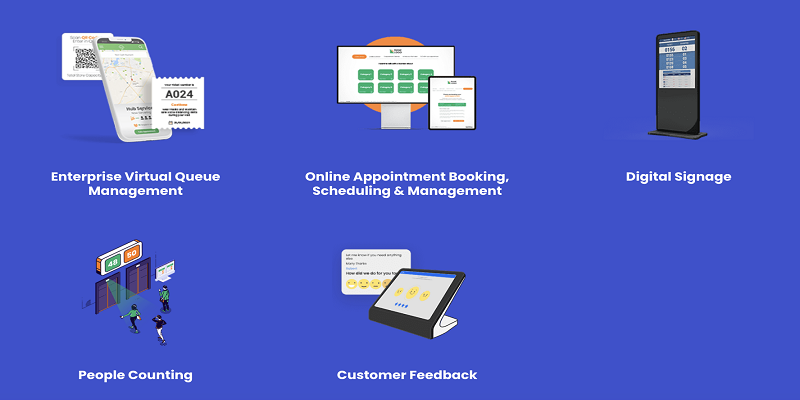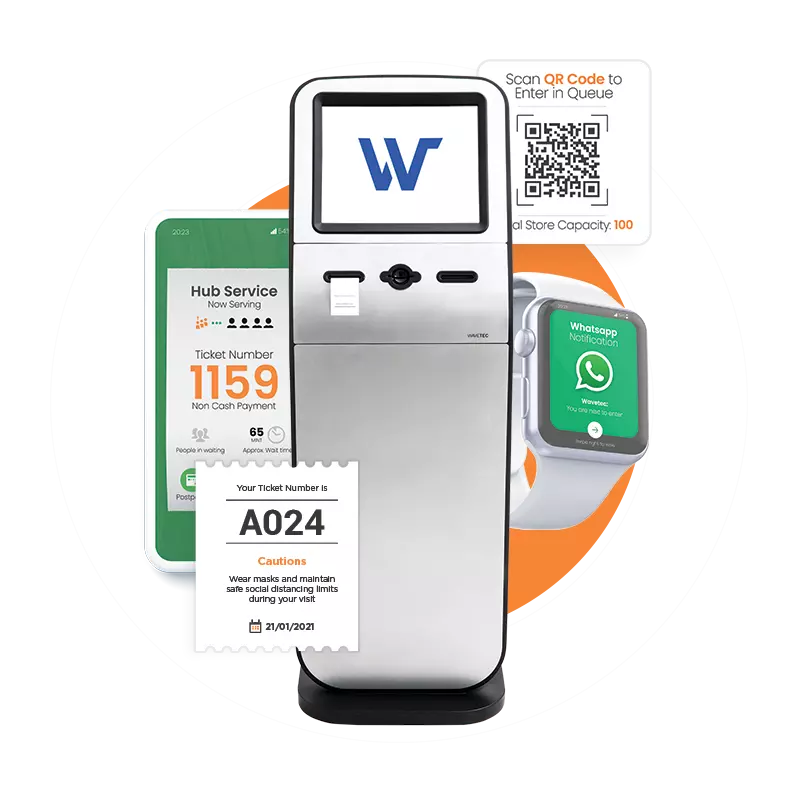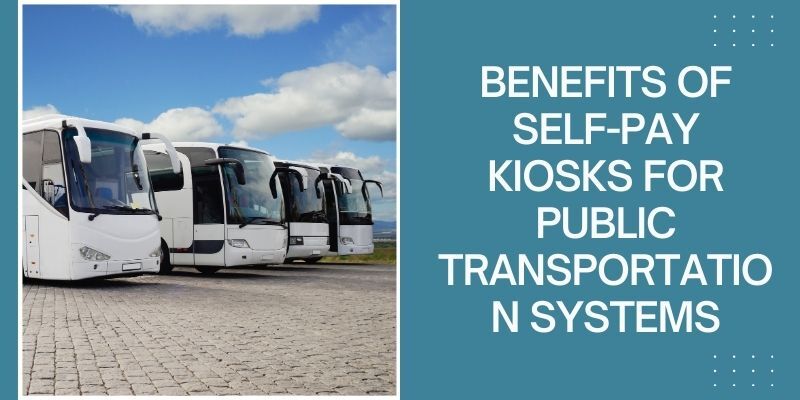We have seen digitization all around us, be it in healthcare facilities, telecommunications, or retail. Digital transformation integrates modern technologies and strategies, which contribute to revolutionizing government services.
Digital transformation is of paramount importance in the government sector. Digitizing helps to enhance operations and customer experiences by fostering innovation in routine practices.
Introducing cloud adoption, data analytics, workflow automation, and digital collaboration is necessary for public sector digital transformation. Governments can enhance service delivery and effectively respond to the evolving needs of citizens.
Government Digital Transformation Statistics
According to Statista, worldwide government IT services spending will amount to approximately 209 billion U.S. dollars in 2023. This will be an 8.9% increase from 2022.
Thus, Digital transformation empowers data-driven decision-making, enabling governments to leverage effective policy formulation.
According to a recent report by McKinsey, digitization has the potential to unlock over $3.5 trillion of economic value for the government and public sector.
In the near future, the public sector is set to witness a rapid increase in digital services for citizens, with Gartner predicting that over 60% of governments will triple their offerings by 2023.
The latest generation of government services is geared towards revolutionizing citizen engagement, including improving connectivity, containing costs, enhancing staff technical competencies, and boosting data security.
Let’s learn about the digital services offerings for the public sector.
What is Digital Transformation in Government and Public Sector?
Digital transformation in government and the public sector refers to the process of utilizing technology and digital solutions to modernize and enhance the delivery of public services, streamline internal operations, and improve overall governance.
Trends in Government Digital Transformation
Digital government transformation is rapidly evolving, driven by technological advancements and changing citizen expectations. From embracing data-driven decision-making to leveraging blockchain technology, governments are revolutionizing public services.
Let’s now explore the latest digital transformation trends in further detail
1. Adoption of Emerging Technologies
As governments adapt to the digital age, adopting emerging technologies becomes vital. From AI to IoT, all these innovations are reshaping public service delivery.
-
Artificial Intelligence and Machine Learning
Artificial Intelligence (AI) and Machine Learning (ML) are revolutionizing government services by automating tasks, predicting trends, and improving decision-making. AI algorithms analyze vast datasets to identify patterns, optimize processes, and enhance citizen engagement.
Machine Learning algorithms enable governments to personalize services, detect fraud, and streamline operations. From virtual assistants to predictive analytics, AI and ML empower governments to deliver more efficient and effective public services, ultimately improving the lives of citizens.
-
Blockchain Technology
Blockchain technology offers governments a secure and transparent platform for various applications, including identity verification, supply chain management, and voting systems.
Blockchain enhances trust and accountability in government transactions by decentralizing data storage and ensuring immutability.
Smart contracts automate processes, reducing bureaucracy and costs while minimizing the risk of fraud and corruption. Governments worldwide are exploring blockchain solutions to enhance transparency, streamline operations, and foster innovation in public service delivery.
-
Internet of Things (IoT)
The Internet of Things (IoT) connects devices and sensors, enabling governments to collect real-time data and optimize resource allocation. IoT applications range from intelligent city infrastructure, such as traffic management and waste disposal, to environmental monitoring and public safety initiatives.
By leveraging IoT technology, governments improve efficiency, reduce costs, and enhance the quality of life for citizens.
From intelligent meters that conserve energy to connected healthcare devices that monitor patient health remotely, IoT transforms government services, making them more responsive and citizen-centric.
2. Data-driven Decision Making
In digital government transformation, data-driven decision-making stands as a foundation. By utilizing the power of data analysis, governments can make informed choices that drive efficiency, enhance services, and meet the evolving needs of citizens.
-
Big Data Analytics
When we look at digital government transformation, big data analytics plays a pivotal role in shaping decision-making processes.
By analyzing vast amounts of data collected from various sources, such as citizen feedback, social media interactions, and operational records, governments can gain valuable insights to optimize service delivery and policy formulation.
Big data analytics enables governments to identify trends, patterns, and correlations that might go unnoticed, allowing for proactive problem-solving and resource allocation.
For example, big data analytics can predict disease outbreaks, allocate resources efficiently, and improve patient care outcomes.
Adopting big data analytics empowers governments to make fact-based decisions that drive innovation, enhance efficiency, and ultimately improve the lives of citizens.
-
Predictive Analytics
Predictive analytics is a basis of digital government transformation, allowing governments to accurately anticipate future trends, risks, and opportunities.
By leveraging historical data and advanced analytical techniques, such as machine learning algorithms, governments can forecast outcomes, identify potential issues, and take proactive measures to address them.
For example, law enforcement can use predictive analytics to identify high-crime areas and deploy resources preemptively, reducing crime rates and improving public safety.
By harnessing the power of predictive analytics, governments can optimize resource allocation, mitigate risks, and enhance decision-making processes across various domains, from healthcare to transportation.
-
Data Security and Privacy
In the times when digital government transformation is gaining momentum, keeping data secure and private is crucial for gaining and maintaining the public’s trust. Governments gather lots of sensitive information, like personal details and financial records, which hackers might try to steal.
Governments can use robust security methods like encryption and access controls to prevent this. They also need to follow rules like the General Data Protection Regulation (GDPR) to ensure they handle data responsibly.
By focusing on data security and privacy, governments reduce the chances of breaches and show they’re transparent, accountable, and worthy of people’s trust.
3. Citizen-Centric Services
When discussing digital government transformation, citizen-centric services are about putting people first. Governments focus on making services easy to access and use, designed to meet the needs and preferences of citizens, ultimately making life better for everyone.
-
User Experience and Design Thinking
Regarding digital government transformation, user experience (UX) and design thinking are vital components. UX focuses on making government services easy and intuitive for people, ensuring they can accomplish tasks efficiently and effectively.
Design thinking involves putting yourself in citizens’ shoes to understand their needs and preferences and designing services around those insights.
By prioritizing UX and design thinking, governments can create user-friendly interfaces and streamline processes, ultimately improving satisfaction and engagement among citizens.
-
Mobile Government and Apps
Mobile government and apps play a crucial role in enhancing accessibility and convenience for citizens. With the widespread use of smartphones, mobile apps offer a convenient way for people to access government services anytime, anywhere.
Whether paying bills, renewing licenses, or accessing information, mobile apps provide quick and easy access to essential services. By investing in mobile government initiatives, governments can meet the evolving needs of citizens, improve engagement, and enhance overall satisfaction with government services.
-
Accessibility and Inclusivity
Accessibility and inclusivity are fundamental principles of digital government transformation, ensuring that government services are accessible to all citizens, regardless of their abilities or backgrounds.
This involves designing websites, applications, and digital content to accommodate various needs, such as visual impairments, hearing impairments, and mobility limitations.
By prioritizing accessibility, governments can ensure that everyone can fully participate in society and access essential services.
Inclusivity goes beyond accessibility to consider all citizens’ diverse needs and preferences, ensuring that government services are designed with empathy and understanding.
Governments can create a more equitable and inclusive society through inclusive design practices.
5 Best Practices for Implementing Digital Transformation in Government

The diversity of government service makes it difficult to control the crowd. Digital solutions are the answer to common problems of queue management and appointments. Let’s discuss the five top ways of digitization:
1. Developing a roadmap and implementation plan
Creating a clear roadmap and implementation plan is crucial to implement digital transformation in government successfully. This requires setting goals, identifying key milestones, and outlining the necessary steps.
For example, Wavetec offers a queue management solution that can be incorporated into the roadmap to streamline citizen services and enhance efficiency.
2. Establishing strong leadership and executive sponsorship
Strong leadership and executive sponsorship are essential for driving digital transformation initiatives. Such a leadership champions change and provide guidance, and allocate resources.
Government services can invest in Digital Signage Solutions that can be used to communicate key messages and create awareness about digital transformation initiatives.
Government organizations can effectively navigate the challenges and ensure successful implementation.
3. Engaging Stakeholders and Citizens
Involving citizens is vital for the success of digital transformation in the government sector. Engage them through communication channels, seek feedback, and involve them in decision-making.
Wavetec has introduced a citizen feedback system to enable direct engagement. Citizens can easily voice their opinions and contribute to the transformation process. It helps representatives address concerns and connect with citizens.
4. Technology Infrastructure and Integration
An important aspect of digital transformation is ensuring a robust technology infrastructure and seamless integration. As new technologies emerge and citizen expectations change, the infrastructure should be able to incorporate innovations and adapt to future requirements.
If your government service wants to accommodate citizens, Wavetec offers Queue Management for effective customer flow management, which can be integrated with existing government systems to provide real-time data for decision-making.
5. Change Management and Culture Shift
Digital transformation requires a shift in the organizational culture and a change in management.
It requires a mindset that embraces innovation and provides continuous learning. This can be done via training programs, workshops, and awareness campaigns for employees.
5 Key Benefits of Digital Transformation in Government
Digital solutions in the public sector allow for collaboration, facilitating the development of smart cities and sustainable solutions. In this segment, we explore the key benefits of digitizing.
1. Enhanced Citizen Engagement and Satisfaction
Citizens find it difficult to have their complaints heard. If addressed, there is a communication gap between representatives and citizens. Digital transformation allows governments to connect with citizens through online platforms, mobile apps, and social media.
For example, a centralized portal for citizens gives access to a wide range of government services and information. Individuals receive updates which makes them feel more involved with the system.
2. Streamlined Processes and Reduced Administrative Burdens
Say goodbye to mountains of paperwork with digital transformation to simplify and automate government processes. Digitizing document management reduces administrative burdens on government staff with quick and easy retrieval of important records.
3. Cost Savings and Increased Operational Efficiency
Manual work at government services requires using resources efficiently to reduce unnecessary expenses. An example is digitizing payment systems to eliminate the need for physical cash handling.
This is an effective way of reducing the costs associated with cash processing and increasing security. Since digitizing enables you to process transactions and requests faster, it eliminates the mistakes made in manual data collection.
4. Transparency and Accountability
Digital transformation promotes transparency and accountability in government operations. Since digital data is easily accessible from anywhere, citizens can monitor government activities and identify delays in the process.
Publishing budget information online and extending e-services for licenses allows citizens to trace the processes and avoid opportunities for favoritism. It is easier to audit the government process and maintain accountability with employees.
5. Improved Collaboration and Interoperability
Digital transformation enables seamless collaboration between government agencies and departments. When systems are interconnected, sharing information and working together becomes a breeze.
This builds a channel for departments to share data and collaborate easily. Citizens do not have to run between departments. Coordinated efforts by government entities make the challenges easier to tackle.
5 Challenges in Government Digital Transformation
As fruitful digitizing may prove to be, it goes without saying that setting up a digital system comes with challenges.
1. Legacy Systems and Outdated Processes
Governments often struggle with outdated technology infrastructure and legacy systems that are not compatible with digital transformation initiatives. Integrating new technologies can be challenging and time-consuming, requiring multiple system upgrades.
2. Bureaucracy and Complex Decision-Making Processes
Government organizations can be hindered by bureaucracy and lengthy decision-making processes. These complexities can slow down the implementation of digital initiatives and innovation.
3. Data Management and Governance
Since governments handle vast amounts of data, ensuring proper data management can be daunting. Data security, privacy concerns, and compliance with regulations pose significant challenges.
Data is prone to security attacks. Thus, establishing robust data management frameworks and implementing effective governance measures are crucial.
4. Digital Skills Gap and Workforce Transformation
Transforming the government sector requires a skilled workforce with digital expertise. However, there may be a shortage of digital skills among government employees. Upskilling, reskilling, and recruiting digital talent are essential to bridge the skills gap and empower the workforce.
5. Funding and Resource Constraints
Although digitizing is profitable in the long run, the initial investment in implementing digital transformation initiatives requires significant technology and talent. Governments often face funding and resource constraints.
This makes allocating sufficient resources to digital transformation projects challenging. Prioritizing investments and exploring partnerships with the private sector can help overcome financial limitations.
Examples of Digital Transformation in Government
There are numerous examples of digital transformation initiatives in government that showcase the application of technology to enhance public services and improve governance. Here are some prominent examples:
- E-Government Portals
- Open Data Initiatives
- Digital ID and Authentication
- Smart Cities
- Chatbots and Virtual Assistants
- Digital Payment Systems
- Data Analytics for Policy-making
Case Studies
Wavetec Provided Digital Transformation Solutions to the Karachi’s Green Line BRT System
Wavetec has played a pivotal role in revolutionizing public transport in Pakistan.
Wavetec deployed a Queue Management System for the public at various bus stations, ensuring efficient passenger flow and reducing waiting times. This system enabled real-time monitoring and management of queues, enhancing the overall passenger experience.
Wavetec’s Digital Signage Solutions were integrated into the Green Line BRT stations to keep passengers informed and engaged. These dynamic displays provided real-time information, such as bus schedules, routes, and service updates.
The customer feedback system was important for gathering valuable insights from passengers. This system allowed users to provide feedback on their experiences, enabling the transportation authorities to address concerns promptly.
Wavetec Deploys Queue Management Solution for Ministry of Commerce & Investment
Wavetec’s Queue Management System, deployed in the Ministry of Commerce & Investment, has streamlined citizen services and improved operational efficiency. Customers do not have to worry about queuing as it reduces wait times and enhances the experience.
By utilizing digital displays and self-service kiosks, citizens can easily access services and track their progress in real-time, resulting in increased satisfaction and reduced administrative burdens.
Digital Transformation In Government Sector – FAQs
Why Is Digital Transformation Important for Government Organizations?
Digital transformation is crucial for government organizations as it enables them to enhance service delivery, improve operational efficiency, and adapt to the evolving needs of citizens in the digital age.
How Does Digital Transformation Promote Transparency and Accountability in Government?
Digital transformation promotes transparency and accountability in government by digitizing data and making it easily accessible to citizens, enabling them to monitor government activities, hold officials accountable, and ensure proper governance.
What Are the Key Elements of a Successful Digital Transformation Strategy for Government?
Key elements of a successful digital transformation strategy for government include clear goals and objectives, strong leadership and stakeholder engagement, robust technology infrastructure, data-driven decision-making, and a focus on citizen-centric services and experiences.
Final Words
Are you convinced that digitizing in the government sector will benefit the public and the employees?
To wrap it up, digital transformation is the much-needed technological upgrade the government sector needs. It encourages streamlining processes and meeting the citizens’ expectations.
Digital transformation increases citizen engagement, drives operational efficiency, foster transparency, and promotes collaboration.
We encourage you to begin an exciting journey that enables your government service to adapt, innovate, and better serve the public in this digital age.
Let’s embrace the possibilities and transform the government sector for the better!
Get in touch with us today and sign up for a digital service of your choice.
BOOK A FREE DEMO








